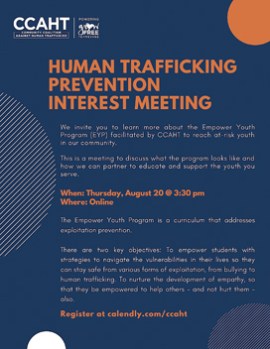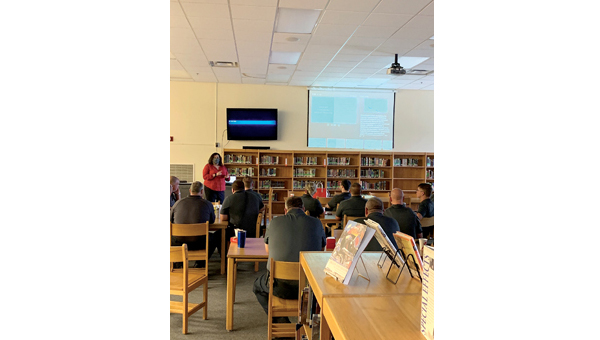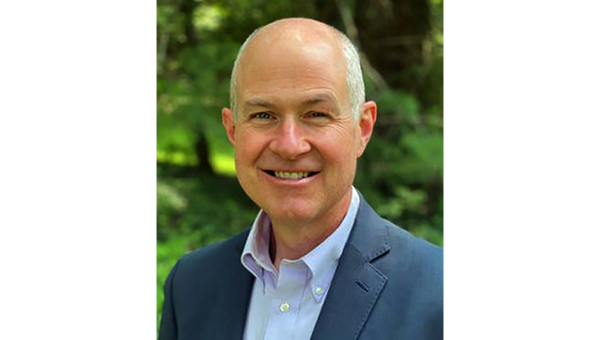Human Trafficking: An issue in your backyard
Published 3:53 pm Thursday, August 13, 2020
1 of 3
|
Getting your Trinity Audio player ready...
|
BY BRITTNEE NAVE
STAR CORRESPONDENT
The Hashtag #SavetheChildren movement has begun circulating online, raising awareness about the very real issue of human trafficking.
Rana Zakaria, the Community Educator with the Community Coalition Against Human Trafficking, said that social media has played both a positive and negative effect in raising awareness.
“These posts, it’s a good thing that it’s sparking interest for people to talk about and people obviously want to help end modern-day slavery and child abuse, but the posts we are seeing are not what we are seeing in our area,” she explained.
While many posts on social media focus on that of celebrities and notable figures, like Jeffery Epstein, Zakaria explained that oftentimes, the cases around here could be happening right next door.
The group Zakaria works for is the Community Coalition Against Human Trafficking, which is based in Knoxville and is the only counter-trafficking organization in East Tennessee.
They serve 33 counties, not only caring for survivors but also training the community on the issue as well.
Zakaria debunked some of the myths surrounding human trafficking.
It’s not happening here.
– She explained that looking at statistics from websites like the Polaris Project, it shows that every state and county has trafficking. Additionally, it is very underreported. Behind drugs, this is the largest criminal industry in the world.
It only happens overseas.
– In many instances, trafficking is happening in our backyards.
“Stranger Danger”
– Zakaria explained that one of the common misconceptions is that trafficking happens like it does in films, such as “Taken.” In reality, it is not a stranger in a van waiting to abduct you and traffic you.
It is actually someone you know. The two most common types of traffickers are familial and romantic partners.
The image of traffickers
– Many imagine traffickers to be scary individuals or look a certain way that suggests it, however, Zakaria explained it is the “perfect crime” as it is people you would least expect, like mothers.
Sex workers
– Not everyone who is trafficked is sex workers.
While trafficking can happen to anyone, regardless of age, race, or gender, there are those who are at higher risk, such as foster children, runaways, those with a history of abuse, etc.
Some (not all) possible indicators of abuse include the following:
– Bruises in areas like wrists, arms, etc.
– Wearing clothing for the wrong weather (like summer clothes in the winter) or wearing the same clothing for numerous days.
– No documentation.
– Identification is key to various resources. Traffickers often take this as a way of controlling victims.
– Poor hygiene.
– Substance abuse
– Fear of authority (DCS, social workers, etc.)
– Many individuals being trafficked have been groomed by their traffickers to not see that they are doing anything wrong. They may even go back to this individual after getting away from them for a period.
– Unable to live independently.
– Some traffickers go with individuals everywhere they go, telling them what to say to others.
– Disoriented
– Possibly lack of sleep. An example of this is the kid deemed disruptive for falling asleep in class, who may actually be abused all night.
Zakaria stressed that not every case of trafficking is black and white. To truly allow possible victims to open up to you, it is good to have natural conversations and foster trust.
Training is free and open to everyone as they are also now available on ZOOM. The Community Coalition Against Human Trafficking can also be found on Facebook for additional information and ways to get involved.
“Our brain doesn’t want to think that it’s happening locally, or happening next door,” said Zakaria.








